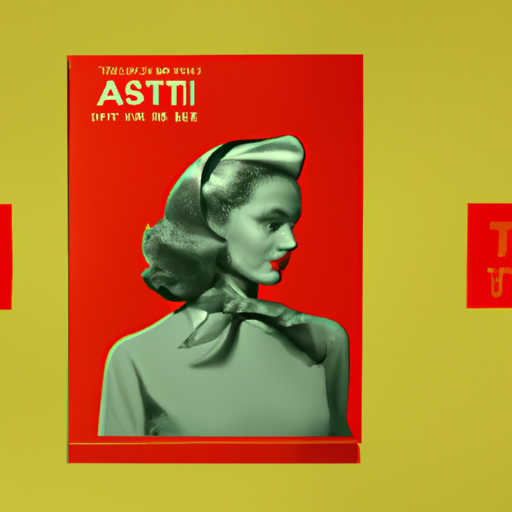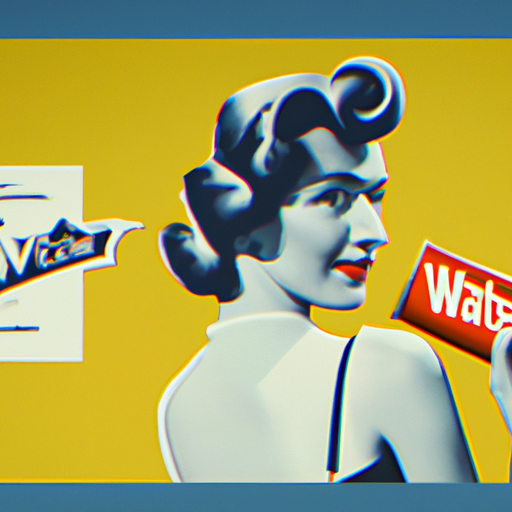
-
Table of Contents
Retro Packaging for Modern Brands: A Twist of Nostalgia

In today’s fast-paced and ever-changing world, brands are constantly seeking new ways to capture the attention of consumers. One strategy that has gained significant popularity in recent years is the use of retro packaging. By incorporating elements of nostalgia into their packaging design, modern brands are able to create a sense of familiarity and emotional connection with consumers. In this article, we will explore the power of retro packaging, its impact on consumer behavior, and how brands can effectively leverage this trend to stand out in the market.
The Allure of Nostalgia
Nostalgia is a powerful emotion that can transport individuals back to a simpler time. It evokes feelings of warmth, comfort, and familiarity. By tapping into these emotions, brands can create a strong bond with consumers and establish a sense of trust and loyalty. Retro packaging allows brands to leverage this emotional connection by evoking memories of the past and creating a sense of nostalgia.
One example of a brand that has successfully utilized retro packaging is Coca-Cola. The iconic red and white design of their cans and bottles has remained largely unchanged for decades. This classic design not only evokes a sense of nostalgia for consumers who grew up with the brand, but it also creates a timeless and iconic image that is instantly recognizable.
The Psychological Impact
Research has shown that nostalgia can have a profound impact on consumer behavior. A study conducted by the Journal of Consumer Research found that individuals who experienced feelings of nostalgia were more willing to spend money on products and services. This is because nostalgia has the ability to make people feel more connected to their past and more optimistic about the future.
When it comes to packaging design, retro elements can trigger feelings of nostalgia and create a positive association with the brand. For example, a study published in the Journal of Business Research found that consumers were more likely to perceive a product as high quality when it was packaged in a retro design. This perception of quality can have a significant impact on purchasing decisions and brand loyalty.
Stand Out in a Crowded Market
In today’s competitive market, it is essential for brands to find ways to stand out from the crowd. Retro packaging offers a unique opportunity to differentiate a brand and capture the attention of consumers. By incorporating elements of nostalgia into their packaging design, brands can create a distinct and memorable image that sets them apart from their competitors.
One example of a brand that has successfully used retro packaging to stand out is Hershey’s. The iconic silver packaging of their chocolate bars, which has remained largely unchanged since the early 20th century, instantly evokes a sense of nostalgia for consumers. This classic design not only differentiates Hershey’s from other chocolate brands but also reinforces the brand’s heritage and tradition.
Case Studies: Retro Packaging Success Stories
There are numerous examples of brands that have successfully leveraged retro packaging to drive sales and increase brand recognition. Let’s take a look at a few notable case studies:
1. Pepsi
In 2009, Pepsi launched a limited edition line of soda cans featuring designs from the 1970s and 1980s. The retro packaging was a huge hit with consumers, generating significant buzz on social media and leading to a 24% increase in sales during the campaign period. The success of this campaign demonstrated the power of nostalgia in capturing consumer attention and driving sales.
2. McDonald’s
In 2015, McDonald’s introduced a limited edition line of Happy Meal boxes featuring retro designs from the 1980s and 1990s. The nostalgic packaging not only appealed to parents who grew up with the brand but also created a sense of excitement and novelty for children. This campaign resulted in a 16% increase in Happy Meal sales during the promotional period.
3. Fanta
In 2018, Fanta released a limited edition line of soda cans featuring retro designs from the 1970s and 1980s. The nostalgic packaging resonated with consumers, leading to a 12% increase in sales during the campaign period. This success prompted Fanta to continue using retro packaging as part of their marketing strategy.
Effective Strategies for Retro Packaging
When incorporating retro elements into packaging design, it is important for brands to strike the right balance between nostalgia and modernity. Here are some effective strategies to consider:
- Research and understand the target audience: Different generations have different nostalgic triggers. Brands should conduct thorough research to identify the elements that resonate most with their target audience.
- Update and modernize retro designs: While nostalgia is the key element, it is important to update and modernize the design to ensure it appeals to modern consumers. This can be achieved by incorporating contemporary colors, typography, and graphics.
- Consistency across touchpoints: Retro packaging should be consistent with the overall brand image and messaging. It should seamlessly integrate with other marketing materials and touchpoints to create a cohesive brand experience.
- Limited edition releases: Creating a sense of exclusivity and scarcity can increase consumer interest and drive sales. Limited edition retro packaging can create a sense of urgency and encourage consumers to make a purchase.
Summary
Retro packaging offers modern brands a unique opportunity to tap into the power of nostalgia and create a strong emotional connection with consumers. By evoking feelings of warmth, comfort, and familiarity, retro packaging can establish a sense of trust and loyalty. Research has shown that nostalgia can have a profound impact on consumer behavior, making individuals more willing to spend money on products and services. Retro packaging also allows brands to stand out in a crowded market by creating a distinct and memorable image. By incorporating effective strategies such as understanding the target audience, updating retro designs, maintaining consistency, and utilizing limited edition releases, brands can effectively leverage retro packaging to drive sales and increase brand recognition. In conclusion, retro packaging is a powerful tool that can help modern brands create a twist of nostalgia and leave a lasting impression on consumers.
